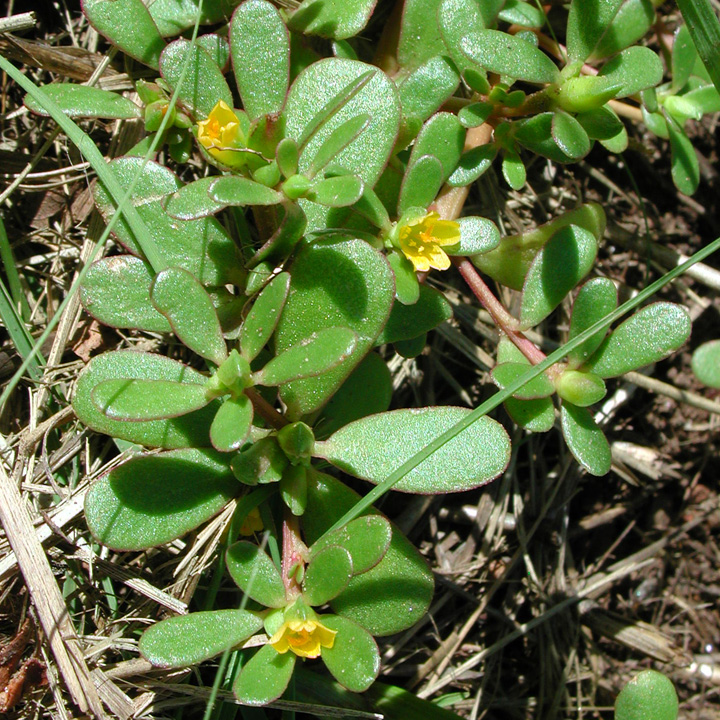- Home
- Search
- Images
- Datasets
- Sample Use
- How to Cite
- Additional Information
- About NEON
- NEON Data Portal
- ASU Biocollections
- About Symbiota
|
Family: Portulacaceae |
Herbs, annual (perennial in P. suffrutescens). Roots tuberous, fleshy, fibrous, or small taproots. Stems erect to prostrate, branched, fleshy or suffrutescent; trichomes in inflorescence or stem nodes absent or present, glabrous otherwise. Leaves: alternate or subopposite, congested and involucrelike immediately proximal to inflorescence; blade terete, subterete, or flattened. Inflorescences : terminal in clusters, or axillary on short branches. Flowers: sessile or subsessile, usually open only in sunshine; sepals broadly clasping at base, herbaceous to scarious, falling from top of capsule; petals ephemeral, 5-7, usually distinct, margins usually entire; stamens (4-)6-40(-100) Ovary : half inferior to inferior, plurilocular proximally to 1-locular distally, placentation free-central; style 1, short, stigmas 3-8(-18). Capsules : membranaceous, chartaceous, dehiscence circumscissile. Seeds many, brown to black or gray, reniform to cochleate; seed coat smooth or variously sculptured, granular to stellate-tuberculate or spiny. x = 4, 5, 8, 9. Species 100-125: nearly worldwide, primarily tropical and subtropical, also temperate. Sep 2; pet 4-6, commonly 5 (more in double-fld forms); stamens 6- many; ovary partly inferior; styles or style-branches (2)3-several; capsule circumscissile near the middle; seeds many; ours succulent annuals with mostly alternate cauline lvs, the uppermost crowded and forming an involucre to the fls, these sessile or nearly so, solitary or glomerate at the ends of the stem and branches. 100+. mostly warm reg. Gleason, Henry A. & Cronquist, Arthur J. 1991. Manual of vascular plants of northeastern United States and adjacent Canada. lxxv + 910 pp. ©The New York Botanical Garden. All rights reserved. Used by permission. |


